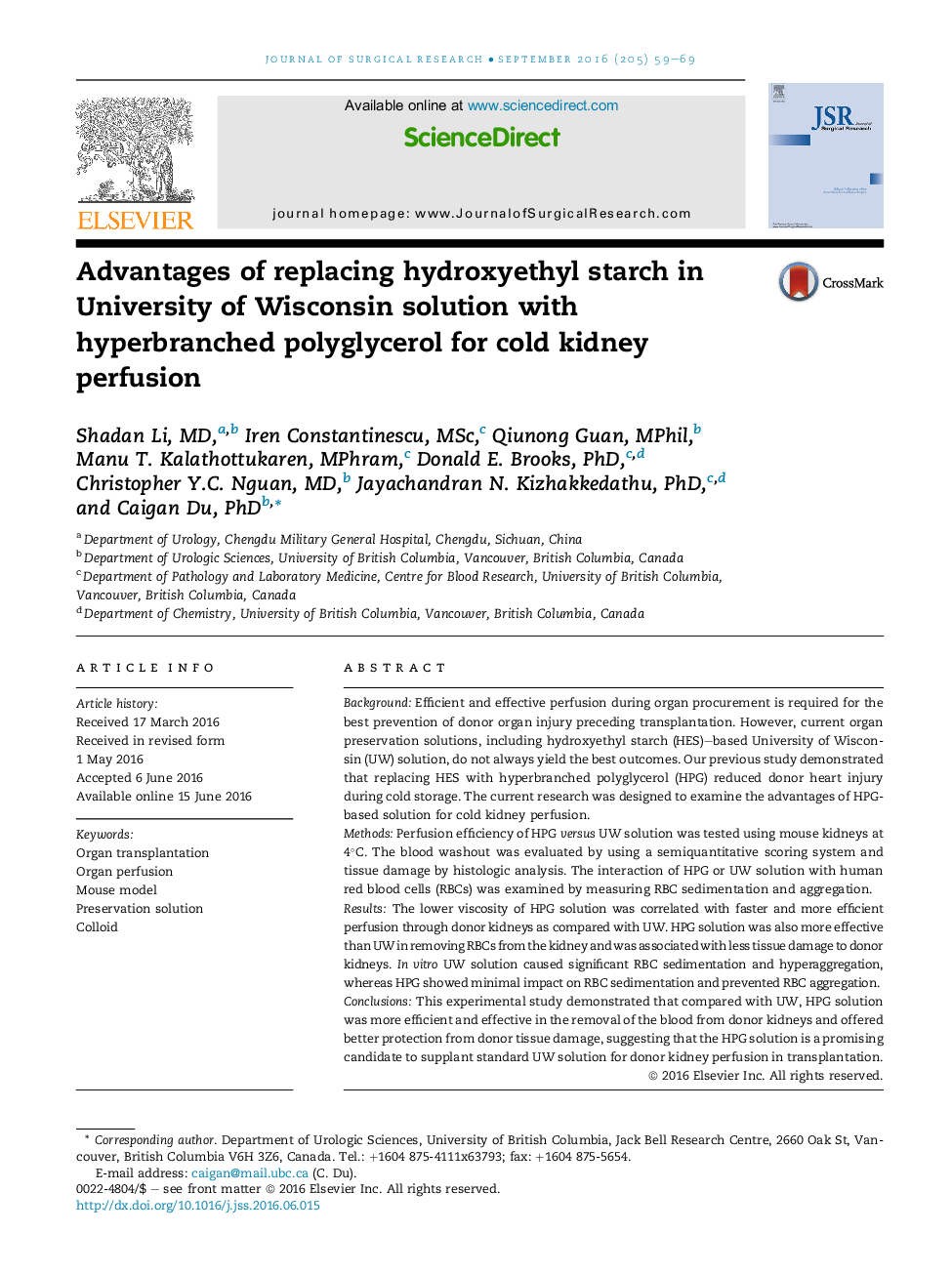| Article ID | Journal | Published Year | Pages | File Type |
|---|---|---|---|---|
| 4299334 | Journal of Surgical Research | 2016 | 11 Pages |
BackgroundEfficient and effective perfusion during organ procurement is required for the best prevention of donor organ injury preceding transplantation. However, current organ preservation solutions, including hydroxyethyl starch (HES)–based University of Wisconsin (UW) solution, do not always yield the best outcomes. Our previous study demonstrated that replacing HES with hyperbranched polyglycerol (HPG) reduced donor heart injury during cold storage. The current research was designed to examine the advantages of HPG-based solution for cold kidney perfusion.MethodsPerfusion efficiency of HPG versus UW solution was tested using mouse kidneys at 4°C. The blood washout was evaluated by using a semiquantitative scoring system and tissue damage by histologic analysis. The interaction of HPG or UW solution with human red blood cells (RBCs) was examined by measuring RBC sedimentation and aggregation.ResultsThe lower viscosity of HPG solution was correlated with faster and more efficient perfusion through donor kidneys as compared with UW. HPG solution was also more effective than UW in removing RBCs from the kidney and was associated with less tissue damage to donor kidneys. In vitro UW solution caused significant RBC sedimentation and hyperaggregation, whereas HPG showed minimal impact on RBC sedimentation and prevented RBC aggregation.ConclusionsThis experimental study demonstrated that compared with UW, HPG solution was more efficient and effective in the removal of the blood from donor kidneys and offered better protection from donor tissue damage, suggesting that the HPG solution is a promising candidate to supplant standard UW solution for donor kidney perfusion in transplantation.
